Tech
How technology is transforming money laundering
On the shallow surface of Instagram, Ramon “Hushpuppi” Abbas was a quintessential influencer. The flamboyant Nigerian portrayed a lavish lifestyle of private jets, luxury cars and designer clothes. His glamorous adventures had earned him over 2 million followers and millions of dollars. But his posts hid a darker reality.
According to the FBI, the 41-year-old was “one of the most prolific money launderers in the world.”
By his own admission, Hushpuppi conspired to launder over $300 million in just 18 months. One of his alleged clients was a certain Kim Jong Un, the supreme leader of North Korea.
With his passion for cybercrime, cryptocurrencyand social media, Hushpuppi embodied a new era for his profession. Technology was transforming money laundering.


The <3 of EU technology
The latest news from the European tech scene, a story of our wise old founder Boris and some questionable AI designs. It’s free, every week, in your inbox. Subscribe now!
His escapades caught the attention of Geoff White, a UK-based investigative journalist. White had won acclaim for The Lazarus Heist, a podcast and book about a cybercriminal collective linked to the North Korean state.
In 2019, the group broke into Malta’s Bank of Valletta.
“At that point, they’re in the bank vaults,” White tells TNW. “They can take the money out, but they have to send it somewhere. They can’t send them to Kim Jong Un’s bank accounts, that would be pretty obvious. So instead they call Hushpuppi.”
Hushpuppi was open for business. The scammer provided bank accounts to wash the stolen money. Prosecutors said he helped launder about $14.7 million from the raid.
 Ramon “Hushpuppi” Abbas was reportedly once a second-hand clothing salesman in Lagos, Nigeria.
Ramon “Hushpuppi” Abbas was reportedly once a second-hand clothing salesman in Lagos, Nigeria.
The Maltese heist highlighted the value of a tech-savvy money launderer. Even righteous hackers backed by a nation-state needed an ally like Hushpuppi.
“North Korean hackers would be extremely good at breaking into banks and financial institutions,” White says.
“Once they get there, they’re not necessarily that good at taking the money away. For this they need collaborators and accomplices who understand how international finance works, how bank accounts work and how money mules work. So they turn to a lot of dark web accomplices.”
These accomplices became the subject of White’s next book, Rinsed. To the TNW Conference on 20 and 21 June in Amsterdam he will discuss his investigation in detail. Before the event, White provided a preview of the results.
Hushpuppi’s fame on social media has made him an unusual accomplice. Using Snapchat and Instagram, he recruited money mules to help transfer stolen money from victims to criminals. As profits filtered through a network of bank accounts, they became harder to trace.
Potential money mules were offered large sums of money for small tasks and a window into much larger fortunes. With his theatrical displays of wealth, Hushpuppi was a living billboard for potential rewards.
“These high-tech money launderers weren’t just helping cybercriminals.
Younger followers are especially susceptible to temptation. In 2019, the researchers found that under-25s are six times more likely to fall victim to criminals using social media platforms than over-50s.
“It’s not just that social media channels give you the ability to find people and communicate with them,” White says. “It also allows mule recruiters to show how much money you can make; to showcase this extravagant lifestyle, driving Bentleys and wearing Yeezys. And this is a powerful tool for recruiting money mules.”
It certainly proved powerful for Hushpuppi. According to the FBI, the charismatic criminal built a global network of mules who moved money at his command. They would use their existing bank accounts or open new ones. Money would flow between them via electronic transfers.
It was a profitable operation, but it had costly drawbacks.
Investigators used Hushpuppi’s Instagram and Snapchat to track his movements and gather evidence. The findings contributed to an 11-year federal prison sentence and an order to compensate his victims $1.7 million.
However, this was a trifle compared to the sums circulating in technology’s greatest contribution to modern money laundering: cryptocurrency.
Cryptocurrency can be a force for good. It can finance those without access to banking services, disrupt centralized financial systems and add more privacy to transactions. All these attractions attract law-abiding citizens. Unfortunately, they are also very attractive to money launderers.
Without central authorities to validate and monitor transactions, criminals can exploit regulatory gaps and quickly move money across borders.
Since large sums are constantly circulating with fluctuating valuations, dirty money is also easier to hide. When the cost of a single coin can reach a growth rate of 10,000%, holders have a convenient explanation for sudden increases in wealth.
Opening accounts is also quick and free. Using computer scripts, large-scale money laundering schemes can be executed with thousands of transfers.
It’s a process that is becoming more and more accessible. Specialized cryptocurrency money laundering services have eliminated the need for technical expertise.
Second Catenaanalysisillicit addresses sent nearly $23.8 billion in cryptocurrency in 2022, 68% more than in 2021. Traditional centralized exchanges were the largest recipients, accounting for just under half of all funds.
Another reason for this growth is cost savings. A traditional money launderer might charge a new client a whopping 60% cut of the proceeds. White says. Even repeat customers can pay 40-60%.
 White became world famous for his reporting on the role of technology in organized crime.
White became world famous for his reporting on the role of technology in organized crime.
In the world of cryptocurrencies, fees can drop dramatically. White knows brokers who charge fees as low as 4%. In exchange, they convert the cash into cryptocurrencies, remove the dirt through various transactions, and then send the cleaned money to the customer’s account.
“Depending on the size of the business, this can mean millions of pounds more in profit than if you had used traditional money launderers,” he says.
Sometimes the cryptocurrency industry isn’t just a facilitator of money laundering. It can also be a target.
Another application for cryptocurrencies is blockchain-based games. Using a business model called “play to earn,” these games reward successful players with tokens and NFTs that have real monetary value.
One of the most popular titles in the genre is Axie Infinity, which has attracted millions of players. It has also attracted the attention of cyber criminals.
In March 2022, hackers stole more than $600 million worth of cryptocurrency from the digital ledger that powers Axie Infinity. Investigators soon identified a culprit: North Korea’s Lazarus group.
The gang had pulled off one of the largest cryptocurrency thefts ever seen. To launder their stolen fortune, they turned to a service called Tornado Cash.
 Cryptocurrencies stolen by North Korean hackers allegedly financed the regime’s nuclear weapons program. Credit: Sipa via AP Images
Cryptocurrencies stolen by North Korean hackers allegedly financed the regime’s nuclear weapons program. Credit: Sipa via AP Images
Tornado Cash is what is known as a “crypto mixer”. These services collect digital assets from various users, merge them, and then redistribute the funds to the designated recipients.
“It helps people protect their privacy, which in crypto transactions is important,” White says. “Unfortunately, it also helped the North Koreans successfully launder the stolen money.”
A technology invented by libertarian programmers had been exploited by one of the most authoritarian regimes in the world.
In August 2022, the US government blacklisted the service. Two founders of Tornado Cash have been charged with laundering more than $1 billion in criminal proceeds.
The Lazarus Group had created another high-tech money laundering case that made headlines. But they were only the tip of the iceberg.
During his investigations, White discovered that new techniques were becoming mainstream.
“I realized that these high-tech money launderers weren’t just helping cybercriminals,” White says. “These are criminals of all types: drug dealers, prostitution rings, child sexual abuse rings. Everyone generates money and everyone has to launder that money somewhere – and often that money ends up in the same funnel.”
As for Hushpuppi, he remains detained in the United States, but his legacy as an influencer lives on.
“I hope that one day I will be able to inspire more young people to join me on this journey,” reads one of his latest posts on Instagram.
Advances in money laundering suggest his wish has come true.
Geoff White will be speaking this year TNW Conference June 20-21 in Amsterdam! If you also want to experience the event (and say hello to our editorial team!), we have something special for our loyal readers. Use code TNWXMEDIA at checkout to get 30% off yours corporate transition, passage of the investor or boot packages (Bootstrap & Scaling up).
Tech
Harvard Alumni, Tech Moguls, and Best-Selling Authors Drive Nearly $600 Million in Pre-Order Sales
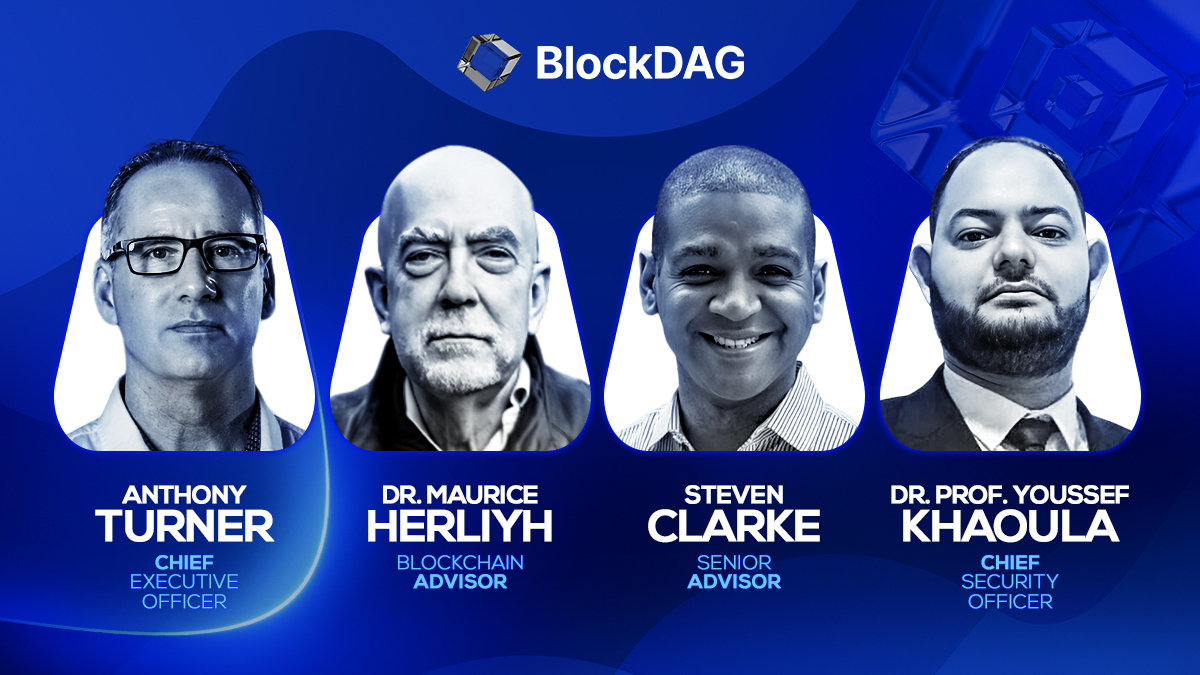
BlockDAG Network’s history is one of innovation, perseverance, and a vision to push the boundaries of blockchain technology. With Harvard alumni, tech moguls, and best-selling authors at the helm, BlockDAG is rewriting the rules of the cryptocurrency game.
CEO Antony Turner, inspired by the successes and shortcomings of Bitcoin and Ethereum, says, “BlockDAG leverages existing technology to push the boundaries of speed, security, and decentralization.” This powerhouse team has led a staggering 1,600% price increase in 20 pre-sale rounds, raising over $63.9 million. The secret? Unparalleled expertise and a bold vision for the future of blockchain.
Let’s dive into BlockDAG’s success story and find out what the future holds for this cryptocurrency.
The Origin: Why BlockDAG Was Created
In a recent interview, BlockDAG CEO Antony Turner perfectly summed up why the market needs BlockDAG’s ongoing revolution. He said:
“The creation of BlockDAG was inspired by Bitcoin and Ethereum, their successes and their shortcomings.
If you look at almost any new technology, it is very rare that the first movers remain at the forefront forever. Later incumbents have a huge advantage in entering a market where the need has been established and the technology is no longer cutting edge.
BlockDAG has done just that: our innovation is incorporating existing technology to provide a better solution, allowing us to push the boundaries of speed, security, and decentralization.”
The Present: How Far Has BlockDAG Come?
BlockDAG’s presale is setting new benchmarks in the cryptocurrency investment landscape. With a stunning 1600% price increase over 20 presale lots, it has already raised over $63.9 million in capital, having sold over 12.43 billion BDAG coins.
This impressive performance underscores the overwhelming confidence of investors in BlockDAG’s vision and leadership. The presale attracted over 20,000 individual investors, with the BlockDAG community growing exponentially by the hour.

These monumental milestones have been achieved thanks to the unparalleled skills, experience and expertise of BlockDAG’s management team:
Antony Turner – Chief Executive Officer
Antony Turner, CEO of BlockDAG, has over 20 years of experience in the Fintech, EdTech, Travel and Crypto industries. He has held senior roles at SPIRIT Blockchain Capital and co-founded Axona-Analytics and SwissOne. Antony excels in financial modeling, business management and scaling growth companies, with expertise in trading, software, IoT, blockchain and cryptocurrency.
Director of Communications
Youssef Khaoulaj, CSO of BlockDAG, is a Smart Contract Auditor, Metaverse Expert, and Red Team Hacker. He ensures system security and disaster preparedness, and advises senior management on security issues.

advisory Committee
Steven Clarke-Martin, a technologist and consultant, excels in enterprise technology, startups, and blockchain, with a focus on DAOs and smart contracts. Maurice Herlihy, a Harvard and MIT graduate, is an award-winning computer scientist at Brown University, with experience in distributed computing and consulting roles, most notably at Algorand.
The Future: Becoming the Cryptocurrency with the Highest Market Cap in the World
Given its impressive track record and a team of geniuses working tirelessly behind the scenes, BlockDAG is quickly approaching the $600 million pre-sale milestone. This crypto powerhouse will soon enter the top 30 cryptocurrencies by market cap.
Currently trading at $0.017 per coin, BlockDAG is expected to hit $1 million in the coming months, with the potential to hit $30 per coin by 2030. Early investors have already enjoyed a 1600% ROI by batch 21, fueling a huge amount of excitement around BlockDAG’s presale. The platform is seeing significant whale buying, and demand is so high that batch 21 is almost sold out. The upcoming batch is expected to drive prices even higher.

Invest in BlockDAG Pre-Sale Now:
Pre-sale: https://purchase.blockdag.network
Website: https://blockdag.network
Telegram: https://t.me/blockDAGnetwork
Discord: Italian: https://discord.gg/Q7BxghMVyu
No spam, no lies, just insights. You can unsubscribe at any time.
Tech
How Karak’s Latest Tech Integration Could Make Data Breaches Obsolete

- Space and Time uses zero-knowledge proofs to ensure secure and tamper-proof data processing for smart contracts and enterprises.
- The integration facilitates faster development and deployment of Distributed Secure Services (DSS) on the Karak platform.
Karak, a platform known for its strong security capabilities, is enhancing its Distributed Secure Services (DSS) by integrating Space and Time as a zero-knowledge (ZK) coprocessor. This move is intended to strengthen trustless operations across its network, especially in slashing and rewards mechanisms.
Space and Time is a verifiable processing layer that uses zero-knowledge proofs to ensure that computations on decentralized data warehouses are secure and untampered with. This system enables smart contracts, large language models (LLMs), and enterprises to process data without integrity concerns.
The integration with Karak will enable the platform to use Proof of SQL, a new ZK-proof approach developed by Space and Time, to confirm that SQL query results are accurate and have not been tampered with.
One of the key features of this integration is the enhancement of DSS on Karak. DSS are decentralized services that use re-staked assets to secure the various operations they provide, from simple utilities to complex marketplaces. The addition of Space and Time technology enables faster development and deployment of these services, especially by simplifying slashing logic, which is critical to maintaining security and trust in decentralized networks.
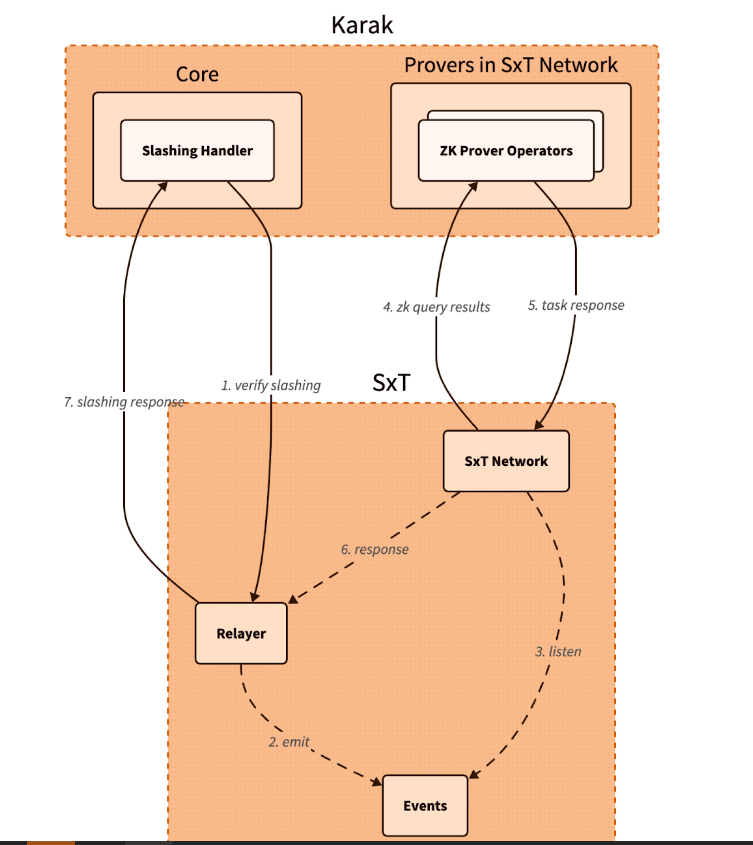
Additionally, Space and Time is developing its own DSS for blockchain data indexing. This service will allow community members to easily participate in the network by running indexing nodes. This is especially beneficial for applications that require high security and decentralization, such as decentralized data indexing.
The integration architecture follows a detailed and secure flow. When a Karak slashing contract needs to verify a SQL query, it calls the Space and Time relayer contract with the required SQL statement. This contract then emits an event with the query details, which is detected by operators in the Space and Time network.
These operators, responsible for indexing and monitoring DSS activities, validate the event and route the work to a verification operator who runs the query and generates the necessary ZK proof.
The result, along with a cryptographic commitment on the queried data, is sent to the relayer contract, which verifies and returns the data to the Karak cutter contract. This end-to-end process ensures that the data used in decision-making, such as determining penalties within the DSS, is accurate and reliable.
Karak’s mission is to provide universal security, but it also extends the capabilities of Space and Time to support multiple DSSs with their data indexing needs. As these technologies evolve, they are set to redefine the secure, decentralized computing landscape, making it more accessible and efficient for developers and enterprises alike. This integration represents a significant step towards a more secure and verifiable digital infrastructure in the blockchain space.
Website | X (Twitter) | Discord | Telegram
No spam, no lies, just insights. You can unsubscribe at any time.
Tech
Cryptocurrency Payments: Should CFOs Consider This Ferrari-Approved Trend?

Iconic Italian luxury carmaker Ferrari has announced the expansion of its cryptocurrency payment system to its European dealer network.
The move, which follows a successful launch in North America less than a year ago, raises a crucial question for CFOs across industries: Is it time to consider accepting cryptocurrency as a form of payment for your business?
Ferrari’s move isn’t an isolated one. It’s part of a broader trend of companies embracing digital assets. As of 2024, we’re seeing a growing number of companies, from tech giants to traditional retailers, accepting cryptocurrencies.
This change is determined by several factors:
- Growing mainstream adoption of cryptocurrencies
- Growing demand from tech-savvy and affluent consumers
- Potential for faster and cheaper international transactions
- Desire to project an innovative brand image
Ferrari’s approach is particularly noteworthy. They have partnered with BitPay, a leading cryptocurrency payment processor, to allow customers to purchase vehicles using Bitcoin, Ethereum, and USDC. This satisfies their tech-savvy and affluent customer base, many of whom have large digital asset holdings.
Navigating Opportunities and Challenges
Ferrari’s adoption of cryptocurrency payments illustrates several key opportunities for companies considering this move. First, it opens the door to new customer segments. By accepting cryptocurrency, Ferrari is targeting a younger, tech-savvy demographic—people who have embraced digital assets and see them as a legitimate form of value exchange. This strategy allows the company to connect with a new generation of affluent customers who may prefer to conduct high-value transactions in cryptocurrency.
Second, cryptocurrency adoption increases global reach. International payments, which can be complex and time-consuming with traditional methods, become significantly easier with cryptocurrency transactions. This can be especially beneficial for businesses that operate in multiple countries or deal with international customers, as it potentially reduces friction in cross-border transactions.
Third, accepting cryptocurrency positions a company as innovative and forward-thinking. In today’s fast-paced business environment, being seen as an early adopter of emerging technologies can significantly boost a brand’s image. Ferrari’s move sends a clear message that they are at the forefront of financial innovation, which can appeal to customers who value cutting-edge approaches.
Finally, there is the potential for cost savings. Traditional payment methods, especially for international transactions, often incur substantial fees. Cryptocurrency transactions, on the other hand, can offer lower transaction costs. For high-value purchases, such as luxury cars, these savings could be significant for both the business and the customer.
While the opportunities are enticing, accepting cryptocurrency payments also presents significant challenges that businesses must address. The most notable of these is volatility. Cryptocurrency values can fluctuate dramatically, sometimes within hours, posing potential risk to businesses that accept them as payment. Ferrari addressed this challenge by implementing a system that instantly converts cryptocurrency received into traditional fiat currencies, effectively mitigating the risk of value fluctuations.
Regulatory uncertainty is another major concern. The legal landscape surrounding cryptocurrencies is still evolving in many jurisdictions around the world. This lack of clear and consistent regulations can create compliance challenges for companies, especially those operating internationally. Companies must remain vigilant and adaptable as new laws and regulations emerge, which can be a resource-intensive process.
Implementation costs are also a significant obstacle. Integrating cryptocurrency payment systems often requires substantial investment in new technology infrastructure and extensive staff training. This can be especially challenging for small businesses or those with limited IT resources. The costs are not just financial; a significant investment of time is also required to ensure smooth implementation and operation.
Finally, security concerns loom large in the world of cryptocurrency transactions. While blockchain technology offers some security benefits, cryptocurrency transactions still require robust cybersecurity measures to protect against fraud, hacks, and other malicious activity. Businesses must invest in robust security protocols and stay up-to-date on the latest threats and protections, adding another layer of complexity and potential costs to accepting cryptocurrency payments.
Strategic Considerations for CFOs
If you’re thinking of following in Ferrari’s footsteps, here are the key factors to consider:
- Risk Assessment: Carefully evaluate potential risks to your business, including financial, regulatory, and reputational risks.
- Market Analysis: Evaluate whether your customer base is significantly interested in using cryptocurrencies for payments.
- Technology Infrastructure: Determine the costs and complexities of implementing a cryptographic payment system that integrates with existing financial processes.
- Regulatory Compliance: Ensure that cryptocurrency acceptance is in line with local regulations in all markets you operate in. Ferrari’s gradual rollout demonstrates the importance of this consideration.
- Financial Impact: Analyze how accepting cryptocurrency could impact your cash flow, accounting practices, and financial reporting.
- Partnership Evaluation: Consider partnering with established crypto payment processors to reduce risk and simplify implementation.
- Employee Training: Plan comprehensive training to ensure your team is equipped to handle cryptocurrency transactions and answer customer questions.
While Ferrari’s adoption of cryptocurrency payments is exciting, it’s important to consider this trend carefully.
A CFO’s decision to adopt cryptocurrency as a means of payment should be based on a thorough analysis of your company’s specific needs, risk tolerance, and strategic goals. Cryptocurrency payments may not be right for every business, but for some, they could provide a competitive advantage in an increasingly digital marketplace.
Remember that the landscape is rapidly evolving. Stay informed about regulatory changes, technological advancements, and changing consumer preferences. Whether you decide to accelerate your crypto engines now or wait in the pit, keeping this payment option on your radar is critical to navigating the future of business transactions.
Was this article helpful?
Yes No
Sign up to receive your daily business insights
Tech
Bitcoin Tumbles as Crypto Market Selloff Mirrors Tech Stocks’ Plunge
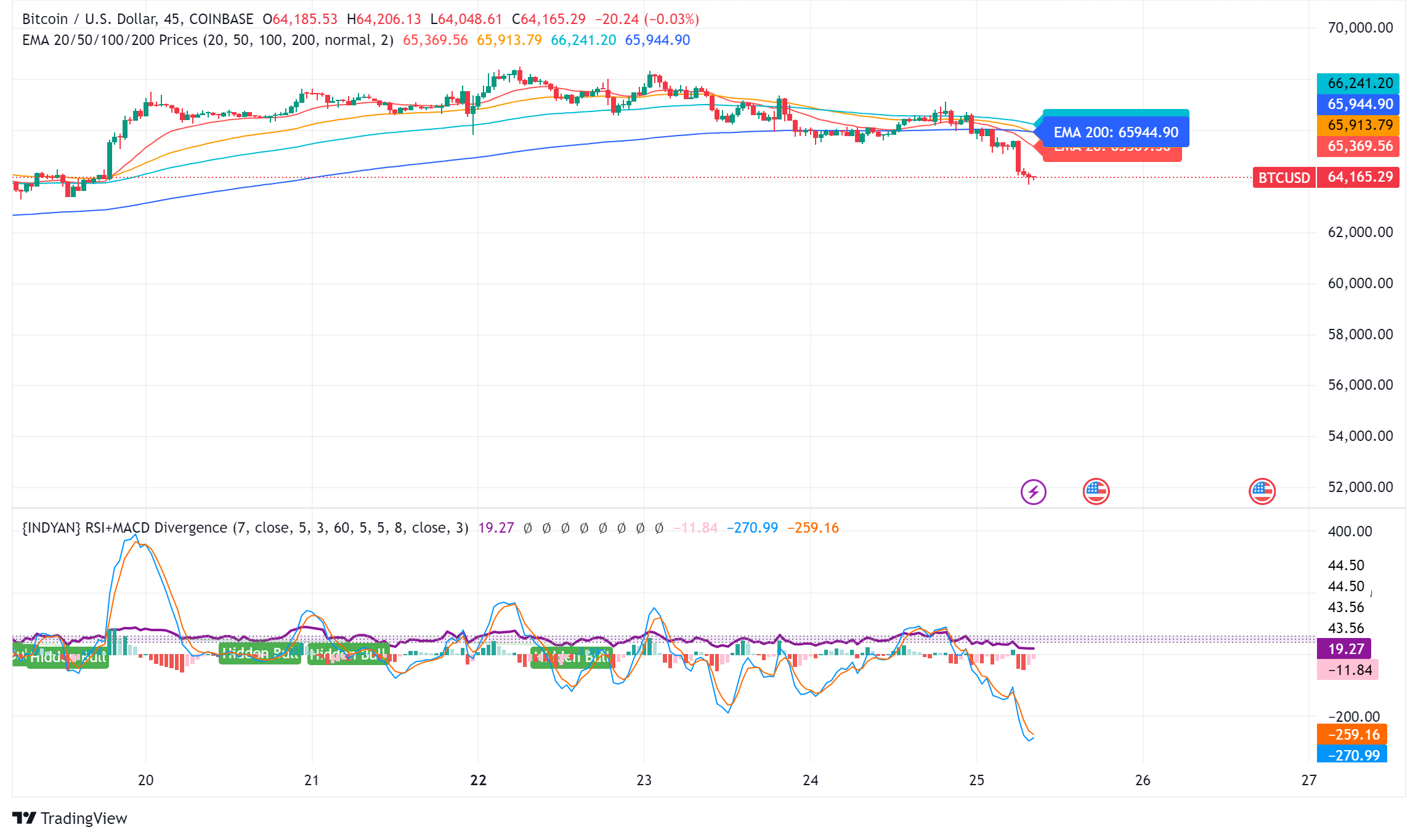
The world’s largest cryptocurrency, Bitcoin (BTC), suffered a significant price decline on Wednesday, falling below $65,000. The decline coincides with a broader market sell-off that has hit technology stocks hard.
Cryptocurrency Liquidations Hit Hard
CoinGlass data reveals a surge in long liquidations in the cryptocurrency market over the past 24 hours. These liquidations, totaling $220.7 million, represent forced selling of positions that had bet on price increases. Bitcoin itself accounted for $14.8 million in long liquidations.
Ethereum leads the decline
Ethereal (ETH), the second-largest cryptocurrency, has seen a steeper decline than Bitcoin, falling nearly 8% to trade around $3,177. This decline mirrors Bitcoin’s price action, suggesting a broader market correction.
Cryptocurrency market crash mirrors tech sector crash
The cryptocurrency market decline appears to be linked to the significant losses seen in the U.S. stock market on Wednesday. Stock market listing The index, heavily weighted toward technology stocks, posted its sharpest decline since October 2022, falling 3.65%.
Analysts cite multiple factors
Several factors may have contributed to the cryptocurrency market crash:
- Tech earnings are underwhelming: Earnings reports from tech giants like Alphabet are disappointing (Google(the parent company of), on Tuesday, triggered a sell-off in technology stocks with higher-than-expected capital expenditures that could have repercussions on the cryptocurrency market.
- Changing Political Landscape: The potential impact of the upcoming US elections and changes in Washington’s policy stance towards cryptocurrencies could influence investor sentiment.
- Ethereal ETF Hopes on the line: While bullish sentiment around a potential U.S. Ethereum ETF initially boosted the market, delays or rejections could dampen enthusiasm.
Analysts’ opinions differ
Despite the short-term losses, some analysts remain optimistic about Bitcoin’s long-term prospects. Singapore-based cryptocurrency trading firm QCP Capital believes Bitcoin could follow a similar trajectory to its post-ETF launch all-time high, with Ethereum potentially converging with its previous highs on sustained institutional interest.
Rich Dad Poor Dad Author’s Prediction
Robert Kiyosaki, author of the best-selling Rich Dad Poor Dad, predicts a potential surge in the price of Bitcoin if Donald Trump is re-elected as US president. He predicts a surge to $105,000 per coin by August 2025, fueled by a weaker dollar that is set to boost US exports.
BTC/USD Technical Outlook
Bitcoin price is currently trading below key support levels, including the $65,500 level and the 100 hourly moving average. A break below the $64,000 level could lead to further declines towards the $63,200 support zone. However, a recovery above the $65,500 level could trigger another increase in the coming sessions.
-

 Videos1 week ago
Videos1 week agoAbsolutely massive: the next higher Bitcoin leg will shatter all expectations – Tom Lee
-

 News11 months ago
News11 months agoVolta Finance Limited – Director/PDMR Shareholding
-

 News11 months ago
News11 months agoModiv Industrial to release Q2 2024 financial results on August 6
-

 News11 months ago
News11 months agoApple to report third-quarter earnings as Wall Street eyes China sales
-

 News11 months ago
News11 months agoNumber of Americans filing for unemployment benefits hits highest level in a year
-
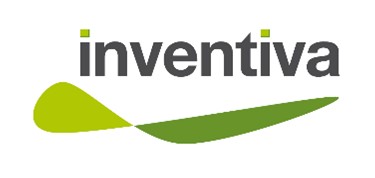
 News1 year ago
News1 year agoInventiva reports 2024 First Quarter Financial Information¹ and provides a corporate update
-

 News1 year ago
News1 year agoLeeds hospitals trust says finances are “critical” amid £110m deficit
-
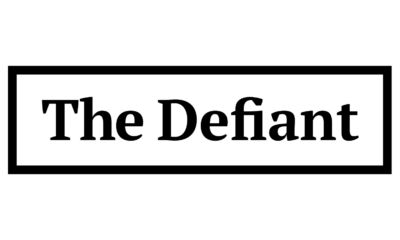
 DeFi1 year ago
DeFi1 year ago🏴☠️ Pump.Fun operated by Insider Exploit
-

 Markets1 year ago
Markets1 year agoWhale Investments in Bitcoin Hit $100 Billion in 2024, Fueling Insane Investor Optimism ⋆ ZyCrypto
-

 Tech1 year ago
Tech1 year agoBitcoin’s Correlation With Tech Stocks Is At Its Highest Since August 2023: Bloomberg ⋆ ZyCrypto
-

 Tech1 year ago
Tech1 year agoEverything you need to know
-

 News11 months ago
News11 months agoStocks wobble as Fed delivers and Meta bounces





